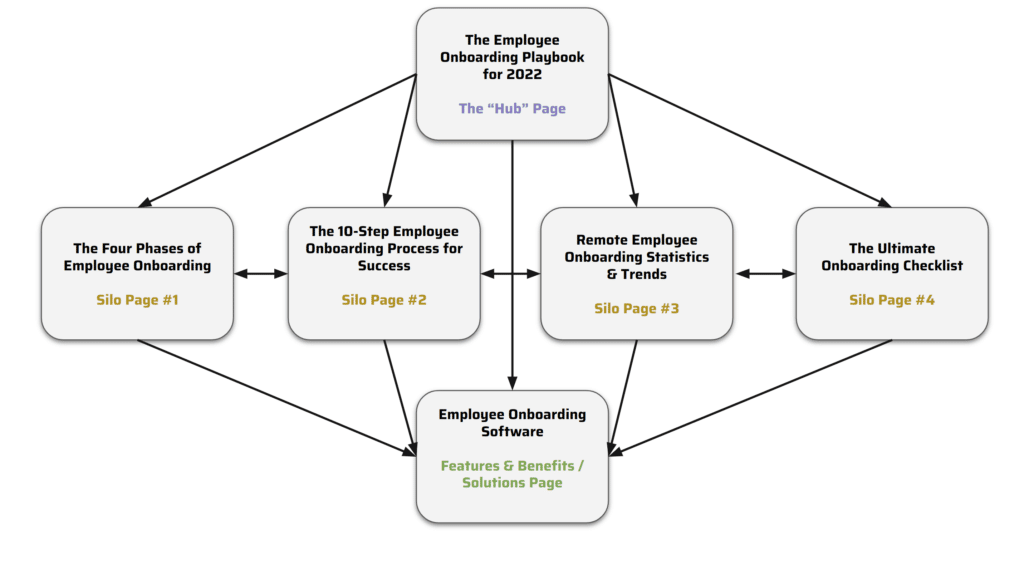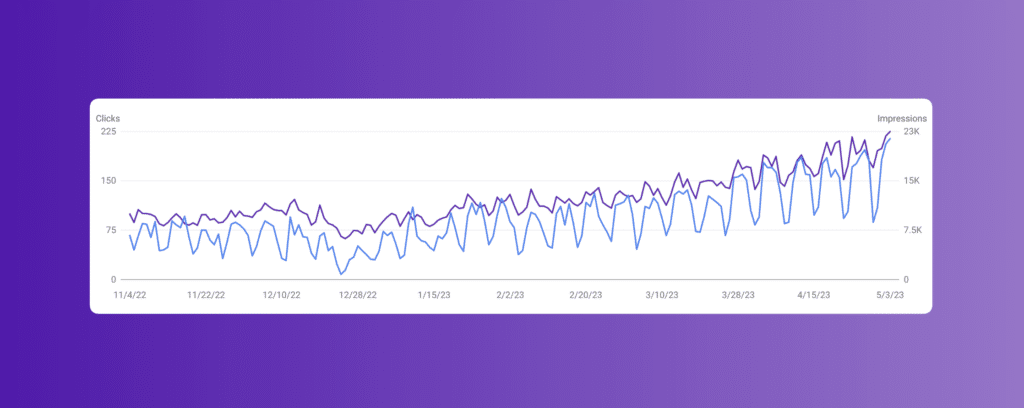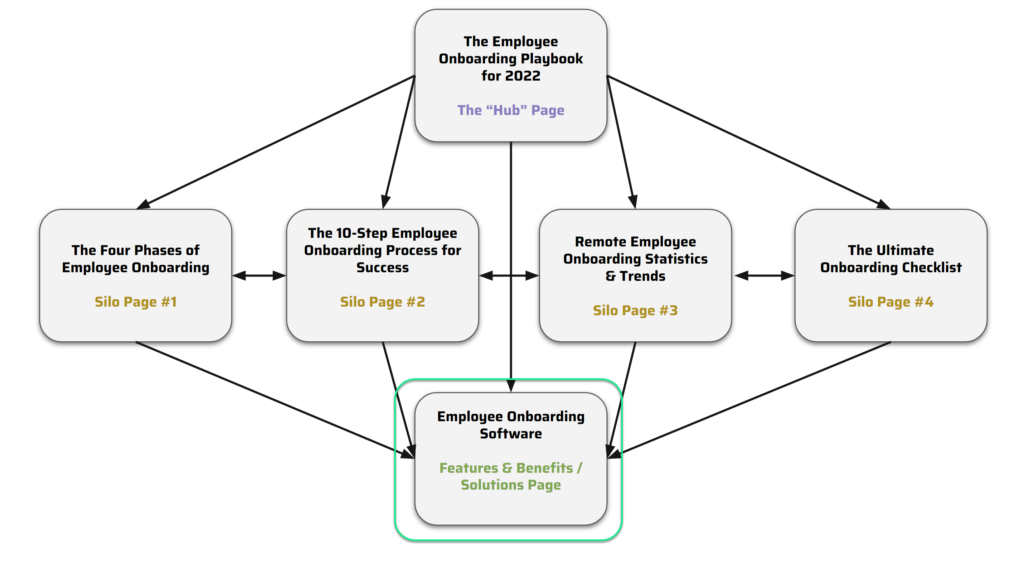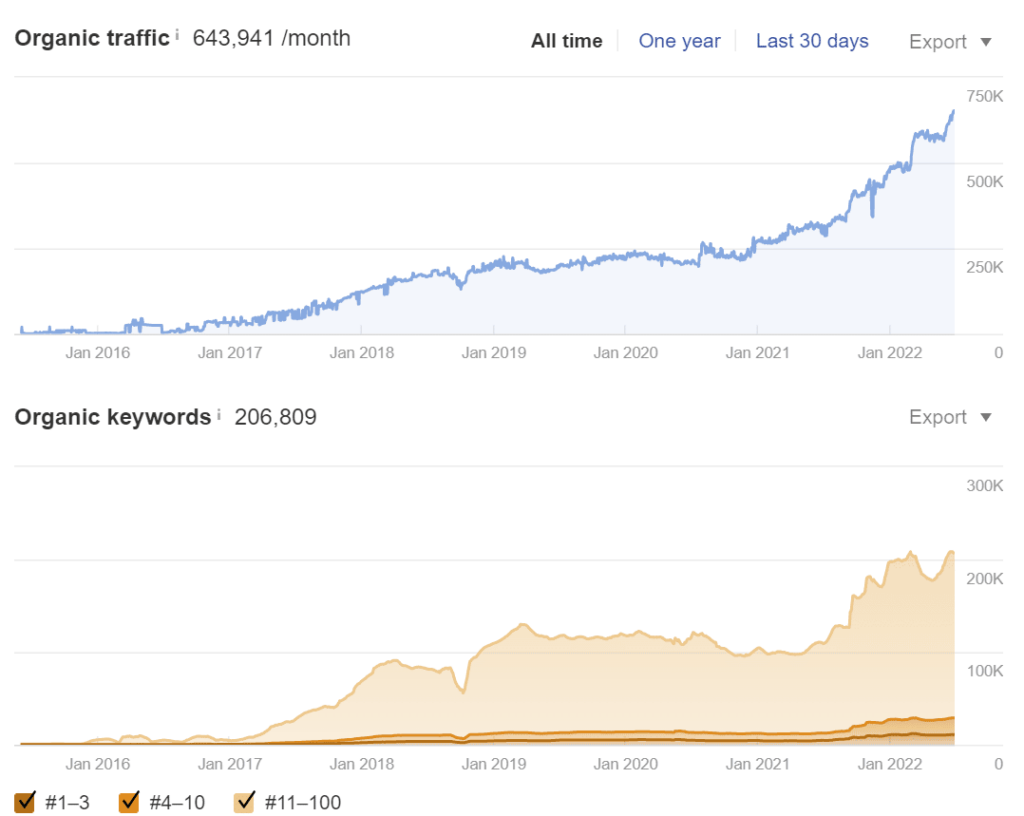A well-designed content hub aims to establish authority on the chosen topic, increase website traffic, and improve overall search engine rankings.
This is achieved by creating a structured content cluster, consisting of a main hub page providing a comprehensive overview of the subject, and a series of interconnected subpages that delve into various related subtopics.
In this article, we’ll focus on how you can build content hubs to increase organic performance and signups.
A content hub is a centralized online destination that contains interlinked collections of content about a similar topic. This strategy is utilized in search engine optimization (SEO) to improve a website’s search traffic, online authority, and user experience.
The main components of a content hub are the hub page or pillar content, which serves as a high-level guide about a broad topic, and the subpages or cluster content, which provide in-depth information about various aspects of the main topic.
These components are interconnected through hyperlinks, making it easy for users and search engine bots to navigate through the content.

Content hubs can offer several SEO benefits, such as attracting more backlinks and generating increased search traffic.
By providing comprehensive and relevant information around a specific topic, a content hub can help establish a website as an authoritative resource in its niche.
This, in turn, can lead to higher search engine rankings and improved visibility in organic search results.
The interconnected structure of content hubs improves a website’s overall organization, making it more user-friendly as well.
A well-designed content hub can guide users through their informational journey, providing them with useful information and deeper related reading that keeps them engaged and ultimately increases conversions.
A content hub is a centralized online destination that contains curated content around a specific topic. It serves as a valuable resource for your website visitors, designed to educate and help readers find the information they need.
Implementing a content hub on your website offers several benefits that can contribute to the success of your online presence.
Content hubs are useful for SEO as they show search engines that your website is an authority on a certain topic.
By categorizing and linking related content, you increase the chances of ranking higher on search results and driving more organic traffic to your site.

By consistently publishing informative and engaging content on a given topic, a content hub can help establish your brand as an industry expert.
This increased credibility can translate into a stronger brand reputation and potentially lead to long-term customer loyalty.
Content hubs offer a user-friendly experience by making it easy for your website visitors to navigate and explore relevant content.
It can decrease the bounce rate and increase the time visitors spend on your site, leading to better user engagement and a higher likelihood of conversion.
Content hubs directly support not only getting additional right-fit visitors to your website – but they also help to facilitate conversions.
A well-organized content hub can drive real business impact.
The more pages users touch during their session, the more likely they will turn into a micro or macro conversion.
Struggling to build meaningful organic traffic that converts? Rock The Rankings is a top-ranked SaaS SEO Agency that helps SaaS businesses build customer acquisition engines using SEO-focused content marketing. We’ll create a free marketing plan for your business, and walk you through step-by-step exactly what needs to be done to grow faster.
To create a content hub, start by identifying the main topics you want to cover.
These topics should be related to your niche and relevant to your target audience.
Consider using keyword research tools to help you pinpoint the most popular search terms and questions related to your field.
Once you have these main topics, you can use them as a foundation for your content hub.
Next, break down each of your main topics into subtopics.
These subtopics should dive deeper into specific aspects of the main topic, allowing your users to learn more about the subject matter.
To find relevant subtopics, look at the questions and searches that people are conducting around your main topics. These details can help you create content that covers a wide range of informational needs, keeping your audience engaged and informed.
Organize your main topics and subtopics into a hub-and-spoke model.
In this model, the main topic serves as the “hub,” with the related subtopics acting as “spokes.” Each “spoke” should link to the “hub” and vice versa, creating a web of interconnected content that’s easy to navigate and understand.

This structure not only improves the user experience but also boosts your website’s SEO performance, as search engines can more easily crawl and index your content.

To maintain a successful content hub, it is crucial to keep it updated with fresh and relevant content.
By consistently publishing new articles, videos, and resources, you ensure that the hub remains a valuable and up-to-date source of information for your audience. To do this:
Ensure that you’re updating topics that can decay over time and cause “SERP slippage” and rankings drops due to a lack of neglect with fresh, relevant content.
Engaging with your audience is a key aspect of maintaining a successful content hub.
Encourage interaction and feedback, as this helps you understand what content is resonating with your visitors and identifies areas for improvement. To enhance visitor engagement:
Regularly assessing the performance of your content hub helps you make informed decisions about its overall effectiveness and areas in need of improvement. To gauge performance, consider the following metrics:
By regularly updating your content, engaging with visitors, and assessing the performance, you can effectively maintain a thriving content hub that provides valuable information to your audience and supports your overall marketing goals.
One example of a successful content hub is the multitude of hubs we created for the team at Toast PoS.
The project involved developing a few dozen content hubs, making up hundreds of different articles.

Coming to the end of the campaign, we were able to reflect on some huge results through the use of proper content hubs within our content planning.
A 200% increase in targetted organic traffic to bottom, mid and top-funnel content assets – the core driver of organic traffic for the business.
If you’re not already leveraging content hubs in your overall SEO strategy – there’s never been a better time to start, than now.
Content hubs are powerful for driving topical authority and relevance to what your actual product and business does, as well as driving deeper use engagements, pages per session, and in turn – a direct impact on sign-up and demo conversions.
Need help building out a content hub strategy that will win your business more conversions? We’re pros and building winning content strategies for SaaS companies that are looking to take organic growth to the next level. Book a time below, and let’s connect.
Founder of Rock The Rankings, an SEO partner that helps B2B SaaS brands crush their organic growth goals. An avid fan of tennis, and growing micro-SaaS businesses on the weekend. 2x SaaS Co-Founder – Currently working to build and scale Simple Testimonial.
Book a 1-on-1 intro call with our founder that includes a FREE custom marketing plan. Start growing faster, today.